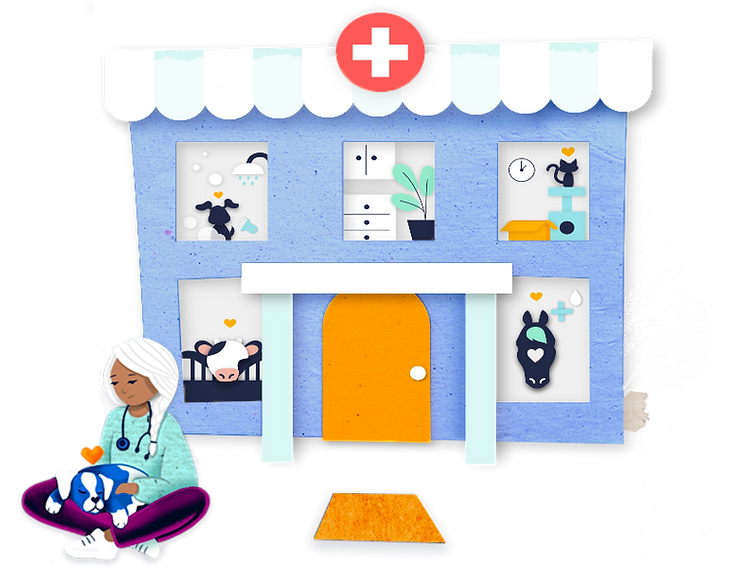Adopting a new veterinary hospital software system can be a major step toward better efficiency, improved patient care, and business growth. However, without the right approach, even the most advanced system can lead to setbacks, delays, and frustrated teams.
Avoiding common mistakes during this transition can save you time, money, and a great deal of stress. Whether you’re switching from an outdated platform or moving away from paper records, here are the top mistakes to steer clear of—and what to do instead.
Planning a Software Upgrade? Avoid These Costly Veterinary Practice Mistakes
Not Involving the Team Early Enough
Too often, decisions about new software are made in isolation. Involving your team from the start builds trust, uncovers needs you may overlook, and ensures smoother adoption. Ask staff to test demos, share feedback, and flag concerns before committing.
Overlooking Workflow Mapping
Each hospital has its own processes. Don’t assume the new software will automatically adapt. Map out your workflows in advance and match them with software capabilities. This ensures you select a solution that fits your operations instead of forcing your team to work around the tool.
Ignoring Data Migration Challenges
One of the biggest hurdles is moving data from old systems to new ones. It’s not just about transferring information—it’s about maintaining its integrity. Inaccurate or incomplete data can easily compromise patient safety. Work with vendors who provide structured migration support.
Underestimating Training Time
No matter how intuitive a system claims to be, proper training is essential. Don’t rely solely on video tutorials. Schedule live sessions, role-based learning, and regular check-ins to reinforce knowledge. Continuous training builds confidence and reduces errors.
Going Live All at Once
Rushing to switch everything over in one day can overwhelm your team. A phased rollout helps identify issues early and makes the transition less stressful. Start with one department or workflow, then expand as confidence grows.
Not Evaluating Vendor Support
The quality of support can make or break your experience. Choose vendors who provide responsive customer service, updates, and community forums. A well-supported system ensures your practice never feels stuck during the learning curve.
Failing to Set Benchmarks and Goals
Without measurable goals, it’s hard to evaluate if the switch was successful. Track patient processing time, appointment volume, task completion rates, and billing accuracy. These metrics offer proof of progress and areas for improvement.
Comparison Table: Mistake vs. Impact
| Mistake | Likely Impact |
| No team involvement | Low adoption, resistance to change |
| No workflow mapping | Misaligned processes, inefficiency |
| Poor data migration | Lost records, patient safety issues |
| Inadequate training | Frequent errors, frustrated users |
| One-day go-live | High-stress, operational breakdowns |
| Weak vendor support | Delays in issue resolution |
| No benchmarks | No clarity on success or failure |
Choosing the Right Software Partner
The right veterinary hospital software doesn’t just offer features—it fits your goals, grows with your clinic, and supports your team. Ask potential vendors how they handle transitions, training, and long-term support. Don’t just buy a product—invest in a partner.
Key Points to Consider When Selecting Veterinary Practice Management Software
- Check system integration with existing tools.
Ensure the software integrates with your current systems, such as laboratory and imaging equipment. For example, if your clinic already uses a digital imaging system, choose software that connects easily without needing extra expenses. - Ensure compatibility with medical equipment.
Confirm that the software works properly with all veterinary devices in your clinic – including X-ray machines, digital thermometers, and weighing scales. Proper compatibility helps maintain accuracy in readings and improves workflow. - Verify data import and export features.
Choose software that allows you to import patient records and other data easily. This supports a smooth transition with minimal disruption. Also, make sure it can export data in various formats (like CSV files) for analysis and reporting. - Look for seamless connectivity and efficiency.
The right software should streamline operations, reduce manual errors, and allow quick access to key information – helping you run your clinic more efficiently from day one.
Closing Thoughts
Switching veterinary hospital software isn’t a routine upgrade. It’s a strategic move that can reshape your hospital’s future. By learning from the most common pitfalls and planning ahead, you’ll ensure your team is supported, your data is secure, and your new system is set up for long-term success.
When done right, software transitions lead to better care, stronger teamwork, and a practice that’s ready to grow with confidence.





